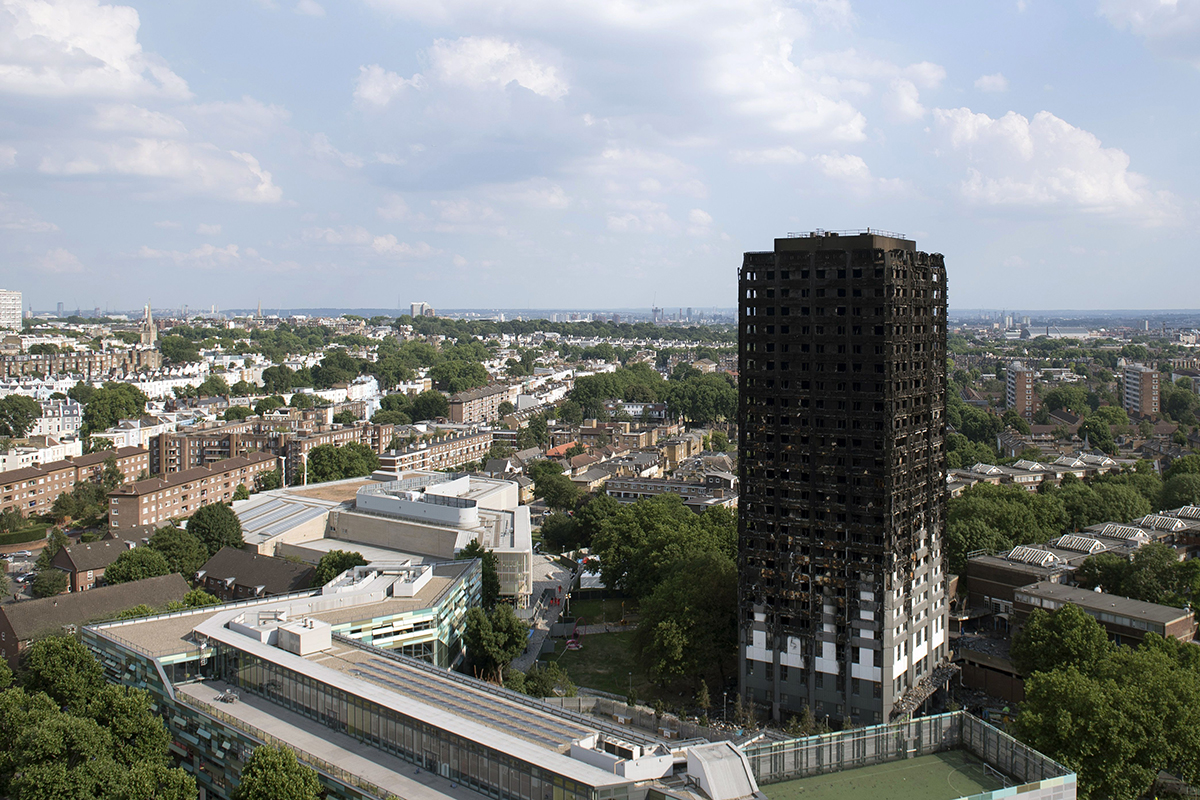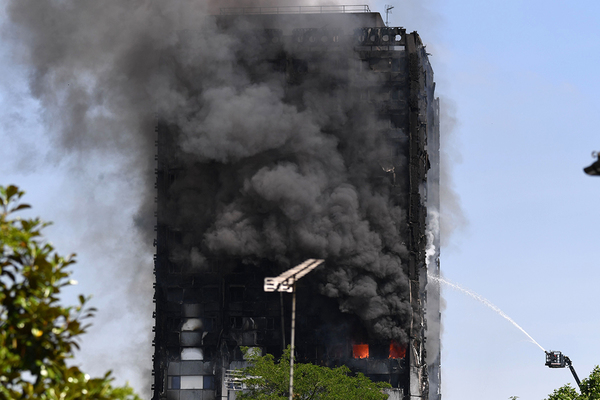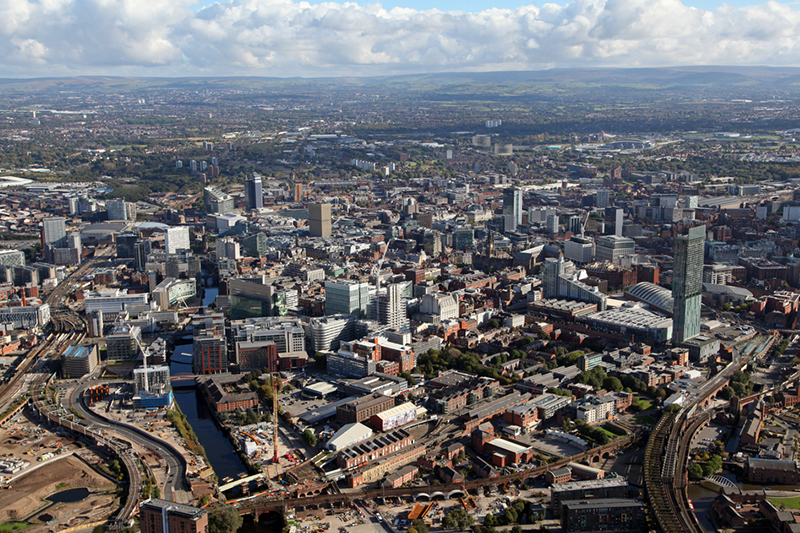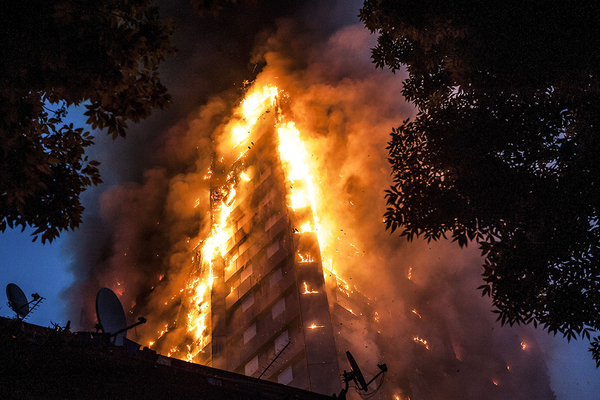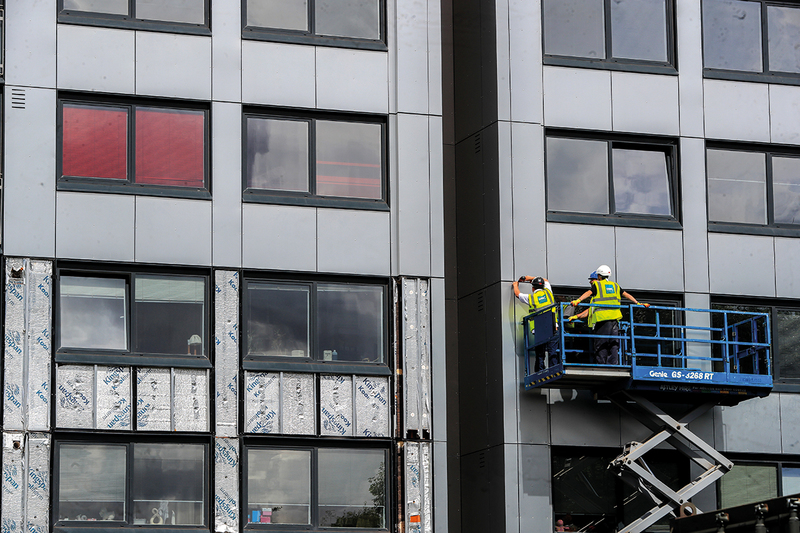You are viewing 1 of your 1 free articles
Stay put or get out: what to tell tenants
The ‘stay put’ advice given to residents in tower block fires is in the spotlight following Grenfell. Nathaniel Barker asks if it is time for a rethink.
Would you stay in a burning building? That was the advice given to residents at Grenfell Tower – of whom 80 are now dead or missing and presumed dead. Several eyewitnesses told Inside Housing that police officers called up to residents waving from windows telling them to stay where they were as flames began to take hold.
So soon after the tragedy, it is of course inappropriate to speculate on whether this advice added to the casualties. Yet, inevitably, the dreadful events that night have placed ‘stay put’ response policies under the spotlight once again, eight years on from the Lakanal House fire.
In a letter to council and housing association chief executives last week, Melanie Dawes, permanent secretary at the Department for Communities and Local Government, told bosses: “Engage with residents to ensure they fully understand the emergency fire procedures in the building, particularly the meaning of ‘stay put’.”
And the London Fire Brigade (LFB) reissued its stay put advice last Friday. “You are usually safer staying put in your own flat or maisonette unless heat or smoke is affecting you,” it said, in line with the majority of the UK’s fire services.
According to a 2012 report commissioned by the Local Government Association (LGA) and authored by C S Todd and Associates titled Fire Safety in Purpose-Built Blocks of Flats, the stay put strategy is based on the understanding that fires in blocks of flats are usually contained within one dwelling.
It argues that stay put is “undoubtedly successful in an overwhelming number of fires in blocks of flats” – and points to official statistics which found that in 2009/10, of more than 8,000 fires in high-rise blocks, just 22 required more than five people to be evacuated with the help of fire fighters.
Established approach
Stay put policies became widely applied in the UK after the British Standards Institution recommended its use in a 1962 version of its code of practice, but not all services use this approach.
Geoff Harris, director of prevention and protection at Greater Manchester Fire and Rescue Service, said its “advice remains that if you have a fire or become aware of a fire in your home which includes blocks of flats, you should get out, stay out and call us out”. A spokesperson for the service confirmed that this represents a divergence from the LFB line.
“If you live in a block of flats where your landlord has advised you to ‘stay put’ in the event of a fire, this is their advice which they should have based on an individual fire risk assessment for that building,” they said.
“The authorities are not giving a clear message to tenants.”
Jake Pauls, a consultant and leading expert on safety and evacuation procedures in tall buildings – who himself lives in a high rise block – said there is still no firm consensus over the relative benefits of “stay put” versus “get out and stay out” – known technically as simultaneous evacuation, where groups of flats are evacuated together.
“The authorities are not giving a clear message to the people living in the wide range of buildings that are high-rise,” he said. “There really should be better guidelines for people like us about this central question.”
He said if a fire broke out in his own building, he would choose to stay if there was no smoke outside his window or in the corridor, although he stressed it is a much more upmarket block than Grenfell Tower.
“This is site-specific. If you are in a building that has problems to begin with then those people should not be told to stay in place.”
Default position
In Greater Manchester, housing bosses were briefed by Andy Burnham and by the city’s fire service chief Peter O’Reilly last week to clarify the brigade’s advice.
Matthew Gardiner, chief executive at Trafford Housing Trust, said: “They are saying the default position is get out.
“But they recognised that a number of landlords have got properties with good compartmentation. If you have got that then there is no reason to evacuate all the residents.”
He said Trafford Housing Trust was confident its tower blocks can support a stay put policy, but it has set up a custom finish group to review its management of high-rise fires.
One of the measures the group is eyeing is a concierge on site at high-rise blocks at all times, after this was recommended by Mr O’Reilly. Reassurance steps such as these might seem simple, but they could play a life-saving role in a crisis situation.
“If you are in any doubt, get out.”
Families living in a block also managed by Kensington and Chelsea Tenant Management Organisation, the Grenfell Tower landlord, told The Guardian newspaper they believe the stay put policy puts lives at risk.
And the thousands across Britain who have been told their homes are clad in combustible material may be forgiven for feeling similarly – rightly or wrongly. Reissuing the stay put advice, Dan Daly, assistant commissioner for fire safety at the LFB, said he can “fully understand why people who live in high-rises have questions about their safety”.
Jan Taranczuk, a housing safety consultant and chair of the Chartered Institute of Housing’s London board, said despite trusting the LFB’s advice: “It may be time to clarify what we mean by ‘affected by smoke or fire’.”
If you live in a 20-storey building, and look out of the window to see smoke several storeys lower, are you then being affected?
A template notice for residents living in stay put buildings in the LGA report echoes the “usually safe” wording used by the London Fire Brigade and other services. But it also adds: “If you are in any doubt, get out.” Post-Grenfell, there may be a danger that even in buildings with good fire containment, knowing you are “usually safe” staying in your home might not be enough to eliminate the doubt.
